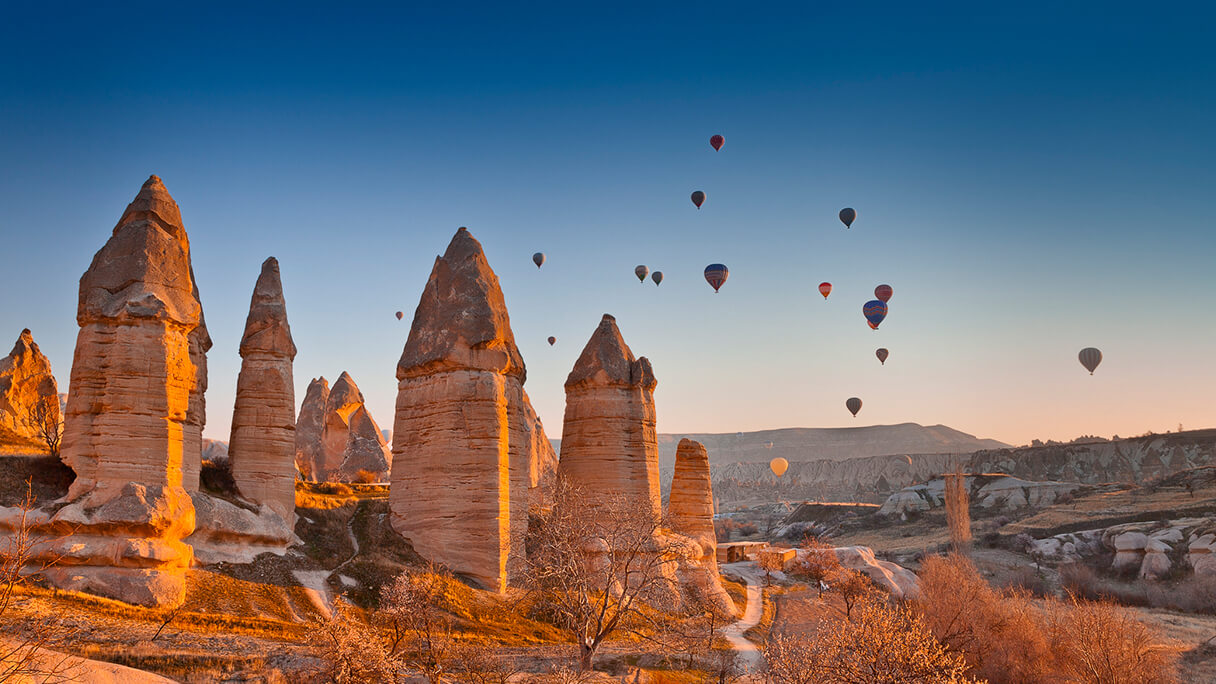Cappadocia is one of the most surreal landscapes in the world, famous for its fairy chimneys, deep valleys, and cave dwellings. But how did this otherworldly scenery come to be? The answer lies in a fascinating combination of volcanic activity, erosion, and thousands of years of natural forces shaping the region.
A Volcanic Beginning
Millions of years ago, massive volcanic eruptions from Mount Erciyes, Mount Hasan, and Mount Güllü blanketed the region in thick layers of ash and lava. Over time, the ash solidified into a soft, porous rock known as tuff, while harder basalt layers formed on top. These distinct layers created the foundation of Cappadocia’s unique geological structure.
As the volcanic activity subsided, cracks and fissures appeared in the rock, making it even more susceptible to erosion. Some areas remained covered in thick lava layers, forming plateaus, while others were left with only soft tuff, which would later be sculpted by natural forces into the extraordinary shapes we see today.
The Power of Erosion
Once the volcanic activity stopped, the landscape began its slow transformation. Wind, rain, and drastic temperature changes gradually wore away the soft tuff, while the harder basalt acted as a protective cap in some areas. Over thousands of years, these forces carved deep valleys, created rock pillars, and shaped the iconic fairy chimneys.
Water played a crucial role in this process. During heavy rains, streams cut through the soft rock, forming gorges and ravines. Meanwhile, underground water slowly dissolved the rock, expanding natural cave systems. This continuous shaping of the land made Cappadocia a dynamic and ever-changing landscape.
A Landscape and Civilization in Harmony
One of the most fascinating aspects of Cappadocia is how humans adapted to this unique environment. The softness of tuff made it easy to carve, allowing ancient civilizations to create homes, churches, and even entire underground cities. These subterranean settlements, some dating back thousands of years, provided shelter from extreme weather and invading forces. Today, many of these rock-cut structures are still in use as homes, hotels, and historical sites, blending past and present in a remarkable way.
A Landscape in Constant Change
Even today, Cappadocia’s landscape is still evolving. Erosion continues to reshape the fairy chimneys, valleys, and rock formations. What we see now is only a snapshot in time—over the centuries, these formations will continue to change, proving that nature is an artist always at work.
From ancient volcanic eruptions to the forces of wind, water, and time, Cappadocia’s landscape is a masterpiece millions of years in the making. Standing among these breathtaking rock formations, you’re not just witnessing a beautiful view—you’re experiencing a story written by nature itself, one that is still unfolding with every passing year.
